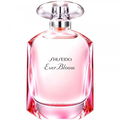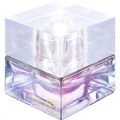To say it right from the start: This last comment of the Corona series, whose special features (for any new ones added at the end) were that they were mercilessly hunted through here every day and that they mostly contained one or two epidemic detours, will not be the big bang, the supernova, which I would have saved until the end. Nope. Shaaaade. I'm glad if it doesn't say here that the first episodes were still exciting, but towards the end it flattened out, you can see that the guy needs a break now and then!
But the comment has a little something special, because it is dedicated to one of the favourite scents of the little nose by my side. The last one I had in mind here was Un Jardin sur le Nil, and that was a long time ago, but it doesn't have that many favourite scents either. And as with the Hermès before, I first had to completely change my perception of the fragrance. I can't possibly evaluate it here as the "signature of Spee's wife", it's simply indescribable (and there's no reason to describe it at all) because it's simply there, naturally as part of her fragrance. And that is perfect. What kind of points should you give? Ten? A hundred?
Instead, I tried it on myself today, as I usually do with commented scents, and try it in a cool-analytical way. So first of all, you take the bottle in your hand and think "Oh no!" Wide and angular, bulky, not fitting the function of a bottle, not ergonomic, not flowing (and thus zero Zen). However, the lid swings smoothly, almost like on a ball bearing, on the reservoir. That's fun!
Three sprayers on the forearm. At the first sniff, surprise, because it doesn't match the gold of the bottle, which suggests a warm and luxuriant fragrance. ZEN is bright, fresh, soft, gentle, gentle, immediately full of flowers, but with green and citrus touches. It is very beautiful, and also very feminine. Not girlish, even less madam-like, simply a beautiful round, fine, feminine fragrance. After a few minutes, ZEN is very flowery-floral with a strong freesia accent, still very fresh and light, almost a little sparkling. At the same time I now perceive a rather light sweet note and - how could I have over-smell that at the beginning - fruit. And first and foremost, yes, the pineapple, it's coming off here as if the stuff was called Aventa. But I still like it very much, even though I'm not usually the fruit bear. It's funny that according to the scent pyramid, there are lilies of the valley in here, too. I wouldn't have found them here, but Spee's wife is Spee's favourite scent flower (Inflorescence, Diorissimo...). I bet she also doesn't know that there are lilies of the valley in ZEN!
After an hour it becomes more tart and flowery, less sweet and more woody; in this phase I don't find ZEN bad, but not so exciting either. After three hours I check if we are already in the base and realize, oops, we are going in circles, it's getting fresher again, what's going on now. I'm afraid that I'll miss the base completely, because the scent is already quite close, but from the fourth hour on it really gets going again and stays there for at least another four or five hours. A creamy, almost a bit vanilla, but still not cuddly, but still very fresh (how did they press the aquatic notes into the base? Hydraulically?) skin enhancer. Actually one of the most beautiful long distance runner base notes I can remember.
Conclusion: A rather feminine, rather bright and light, developmentally strong fragrance with a wonderful one to two hour floral-fruity opening, an equally wonderful very long creamy and at the same time fresh base, and the in-between is somehow bridged with a very nice light wood construction. Nice! ZEN manages to create beautiful contrasts and developments without incorporating a somehow nasty, stinky contrast medium. Here you combine beautiful with beautiful and it still works out.
What does this have to do with Zen now? Nothing. And that's why there are only four points for the name. The name is iconic. But it fits like a glove. In the West (and, since Shiseido is a Japanese company, also in Japan) the term Zen is used and misused for all kinds of things that have as much to do with Zen as a bag of gummy bears with the issue of the Ten Commandments to Moses on Mount Sinai. Most of the time, for some unknown reason, this is then written in capital letters ZEN, or, even more absurd, with dots, Z.E.N. For whatever reason. Like F.D.P. maybe
Originally the word is Sanskrit and means "dhyana", and it is often translated as "meditation", but this is somewhat imprecise, because "meditation" often refers to something concrete like a picture or a thought or text that you want to chew through mentally, but "dhyana" rather means an objectless immersion in which all thoughts are left behind. The practice of dhyana was of great importance in Buddhism from the beginning, and when it migrated from India to China, the Chinese adopted the foreign language term and pronounced it "Chan". When different schools were formed within Buddhism, there was one that made a point of not talking and arguing about which is the correct interpretation of the scriptures, but if you really want to get to the bottom of things, just shut up and meditate on the seat cushion for a few hours (or months), i.e. do Chan. And these were the Chan Buddhists. And when Chan went to Korea and Japan, Chan became Seon and Zen. And this is the story of the term. It's a deeply religious practice and the search for the ultimate meaning and truth and has nothing to do with wellness and aromatherapy. Definitely not.
I actually wanted to write more about Zen here, but there is no time or place for that now, and maybe this is not the place. And maybe it's better that way, because talking about Zen, especially if you're not a Zen master yourself, but talk about the melon like someone who only licked its skin from the outside, is actually against its founding story anyway. It's best to try Zen yourself! br />
And ZEN from Shiseido is a completely different thing, but it's also very beautiful. Most beautiful - of course - to Frau von Spee.














 Top Notes
Top Notes  Pineapple
Pineapple Peach
Peach Bergamot
Bergamot Blue rose
Blue rose Grapefruit
Grapefruit Heart Notes
Heart Notes  Freesia
Freesia Gardenia
Gardenia Red apple
Red apple Lily of the valley
Lily of the valley Lotus
Lotus Violet
Violet Chinese rose
Chinese rose Hyacinth
Hyacinth Base Notes
Base Notes  Patchouli
Patchouli Cedarwood
Cedarwood Marine notes
Marine notes White musk
White musk Amber
Amber Frankincense
Frankincense Musk
Musk



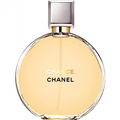
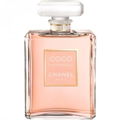

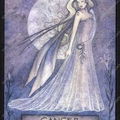






 Steffi91
Steffi91 EmilyRose
EmilyRose TaoEuringer
TaoEuringer




